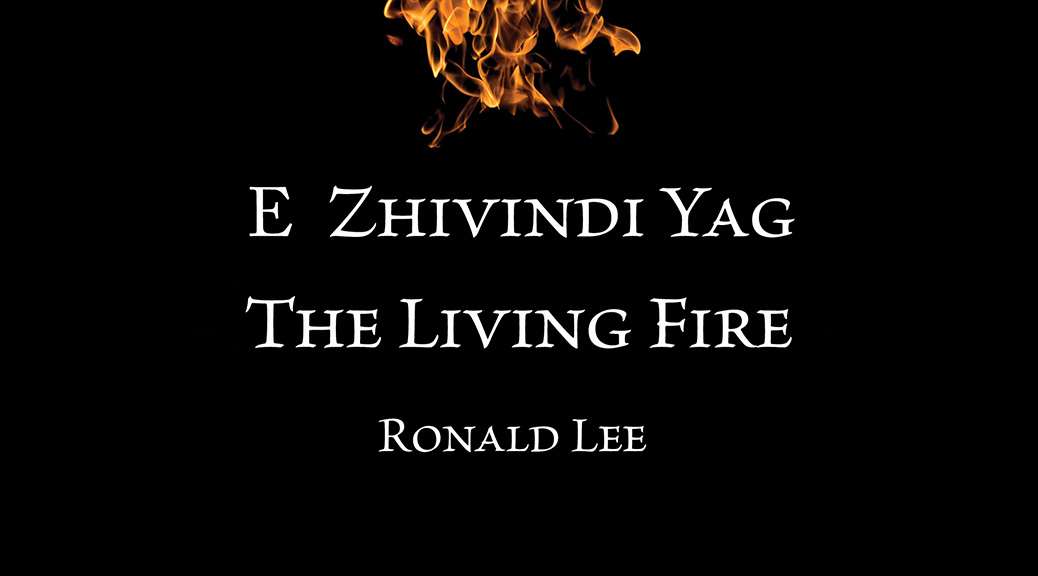Ronald Lee receives his honourary LLD degree from Chancellor James E. Leech at Queen’s University, November 18, 2014.
All posts by RL
With Yul Brynner at the UN in New York May 31, 1978
Ronald Lee with Yul Brynner at the UN in New York May 31, 1978 as part of a delegation composed of Yul Brynner, Ian Hancock, John Tene and Ronald Lee. This was the official presentation of the Petition from the Romani Union representing the Roma in 32 countries requesting status in the UN as a people without a country. Ron Lee carried the first Canadian Romani flag made by his daughter Diana “Johnny” Lee. In 1979 the UN granted the Romani Union status of an NGO Third Class with consultative status to the UN.
Šaip Jusuf Award 2012
Professor Hedina Sijerčić presenting Ronald Lee with the Šaip Jusuf Award for Romani Language and Literature, December 14, 2012.
The Living Fire
Before me are two roads …
“The living fire is that spark of defiance that is the birthright of everyone. In some, it has gone out, in others, it is only a smouldering ember. But in others it blazes into an inferno of passion, creativity, rebellion and all too often violence. This is my story, the saga of a Canadian-born Rom. All names of characters, except mine and that of my wife, are fictitious and the drama is in places fictionalized, a parallel rather than the actuality. But the pathos, tragedy and humour are a part of my life and my struggle to find recognition and equality in the land where I was born. I failed in both of these aims and this is the story of that failure.”
Ronald Lee, London, England, 1970.
Ronald Lee’s autobiographical novel, formerly published as Goddam Gypsy, is an intense, fast-moving and brutally honest affair. Yanko – a Canadian Rom who ‘took the non-Romani way but didn’t go far’ – seeks his fortunes both among and apart from the Roma, never quite finding his place.
His story exposes the out-of-sight, out-of-mind world of Canada’s Roma in 1970’s Montreal: Parties, rackets, bar brawls, weddings, desperate poverty, and intermittent police raids fuel in Yanko the passion, creativity and rebellious defiance that is The Living Fire.
“A New Look at Our Romani Origins and Diaspora” by Ronald Lee
©Ronald Lee, 2009, all rights reserved
“Until lions have historians,
Stories of the hunt
Shall always glorify the hunters.’’
— African proverb
The Mystery People and the Pseudo-Egyptians
For almost five-hundred years after we Romani people appeared in Europe in the late 14th and early 15th centuries, Europeans were asking where we had come from. By then, we ourselves had forgotten our origins in North-Central India although in 1422 some Romani newcomers did tell Italians in Forli, Italy, who asked them where they had come from, that their original homeland was in India. (Muratori, 1731, Vol X1X: 890) This remained buried in the archives until recently (Informaciako Lil 7-9, 1992). Our Indian origin only started to become known in the latter 18th century among a select group of scholars such as pioneer Heinrich Grellman.
Continue reading “A New Look at Our Romani Origins and Diaspora” by Ronald Lee
Learn Romani – Das Duma Romanes
Following 18 carefully structured lessons, this Romani language primer explores the vocabulary and grammar of the Kalderash Roma in Europe, the United States, Canada, and Latin America. Designed for beginner students, this course reference begins with the basic verbs and nouns and builds through to the subtler grammatical necessities of reading and speaking the language. Quotations from native speakers, poems, songs, proverbs, and folktales add to the cultural and historical understanding of the language.
This course of Romani language lessons is intended both for Romani people who wish to re-learn their ancestral language in its modern form and for non-Roma who want to learn Romani. Romani has many dialects and no standard written form; this course is based on the Romani language as spoken by the Kalderash Roma in Europe, the US, Canada, and Latin America – a native speaker of a particular Kalderash dialect can usually converse fluently with any other Kalderash speaker. Kalderash-Romani belongs to the Vlax-Romani group of dialects which evolved in central Europe before spreading all over the world. Speakers of Vlax-Romani dialects far outnumber speakers of any other Romani dialect worldwide. The phonetic system used is based on English and is designed to be understood by English speakers, and any grammatical and linguistic terms are clearly explained.
Eighteen lessons take the student from the basic declensions of verbs and nouns, gradually building up vocabulary and grammar, through to the later lessons which fill in the subtler points of this rich language. Romani is a living language, borrowing vigorously from the languages of the countries where its native speakers find themselves. Quotations from native speakers are printed throughout the book to give a flavour of authenticity, as are poems, songs, proverbs and folk tales which the student will gradually be able to understand.
Bibliographer Edward Proctor has provided a comprehensive list of source materials for further study of Kalderash and related dialects for the interested student.





